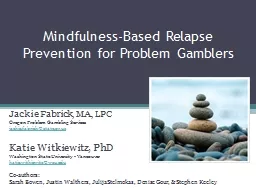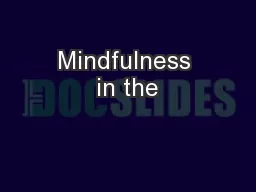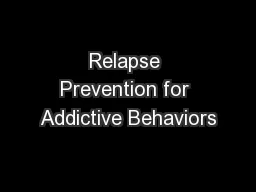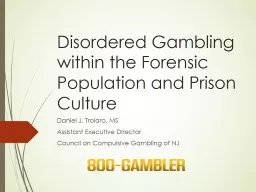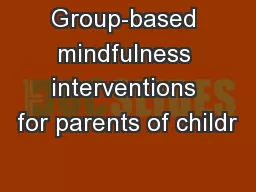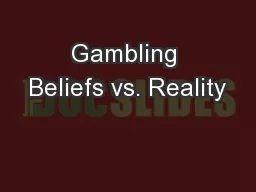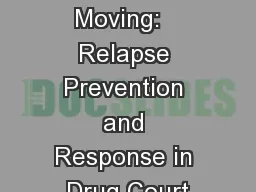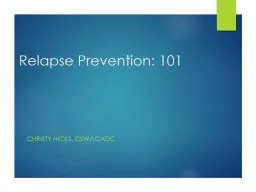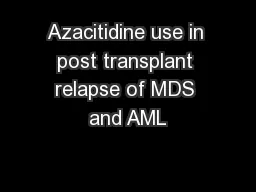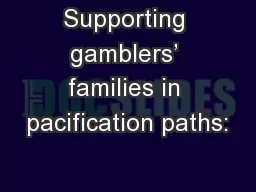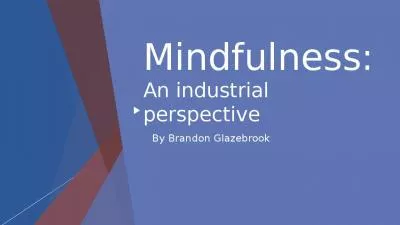PPT-Mindfulness-Based Relapse Prevention for Problem Gamblers
Author : kittie-lecroy | Published Date : 2016-04-25
Jackie Fabrick MA LPC Oregon Problem Gambling Services jackiefabrickstateorus Katie Witkiewitz PhD Washington State University Vancouver katiewitkiewitzwsuedu
Presentation Embed Code
Download Presentation
Download Presentation The PPT/PDF document "Mindfulness-Based Relapse Prevention for..." is the property of its rightful owner. Permission is granted to download and print the materials on this website for personal, non-commercial use only, and to display it on your personal computer provided you do not modify the materials and that you retain all copyright notices contained in the materials. By downloading content from our website, you accept the terms of this agreement.
Mindfulness-Based Relapse Prevention for Problem Gamblers: Transcript
Download Rules Of Document
"Mindfulness-Based Relapse Prevention for Problem Gamblers"The content belongs to its owner. You may download and print it for personal use, without modification, and keep all copyright notices. By downloading, you agree to these terms.
Related Documents

